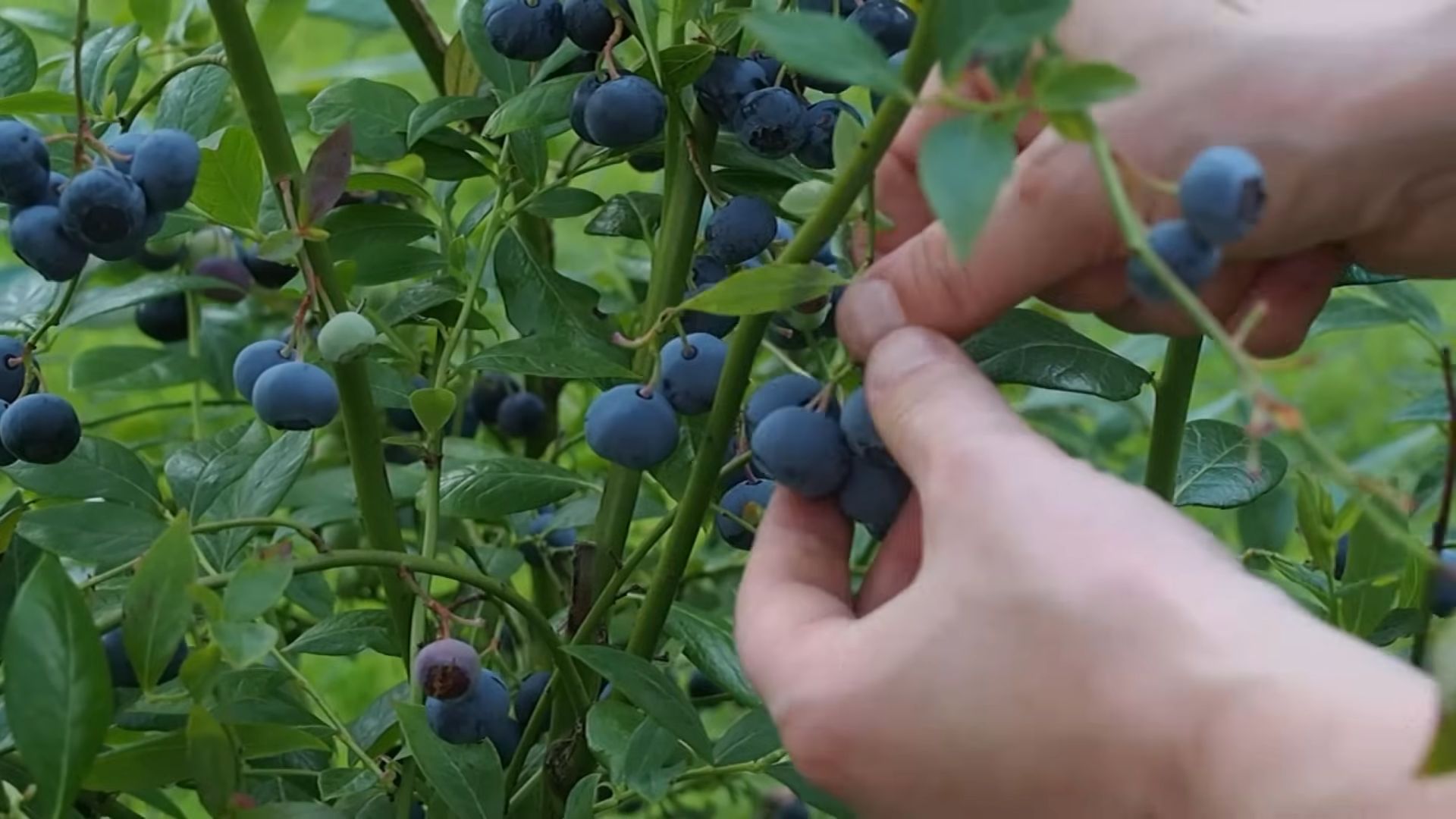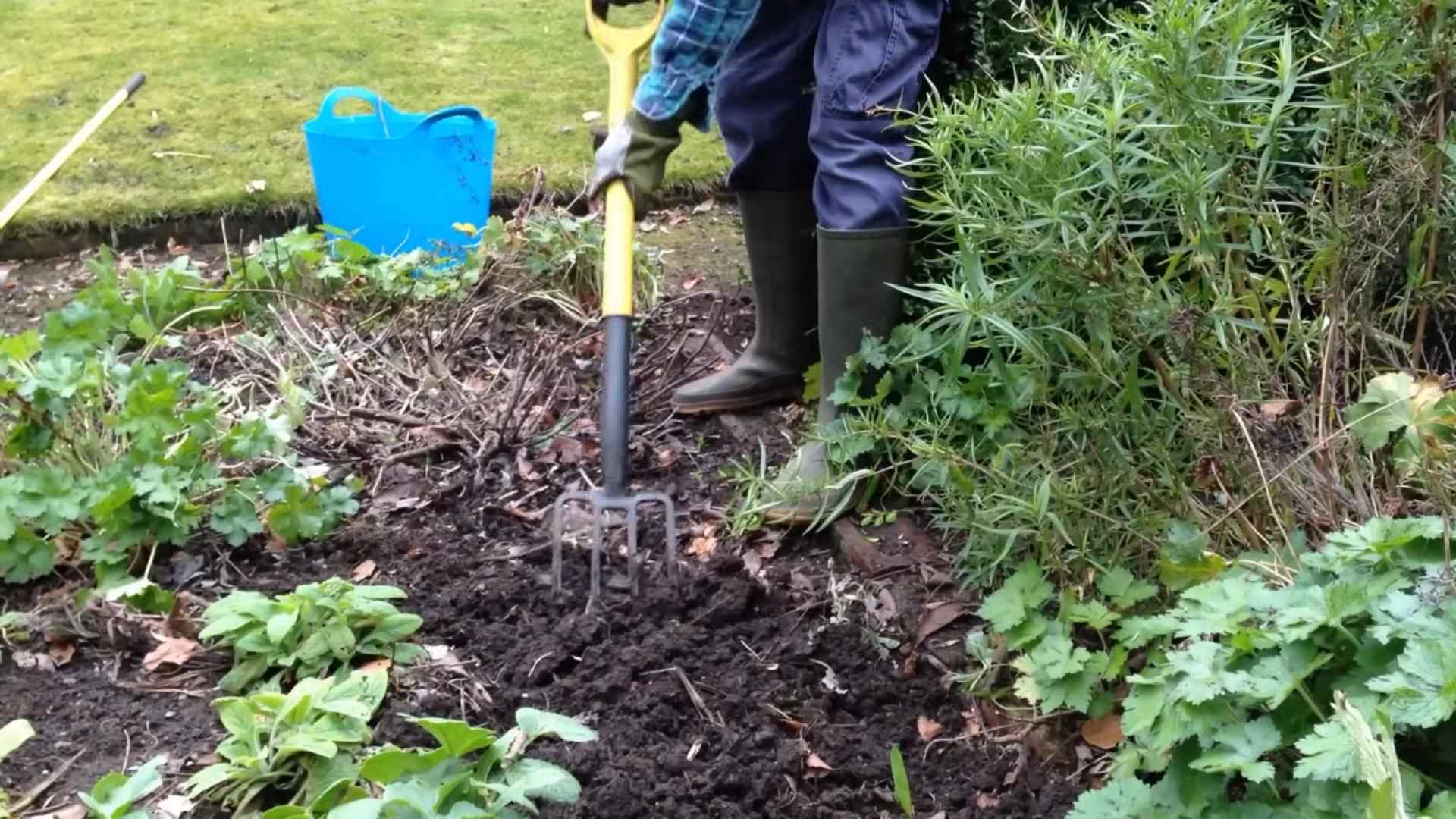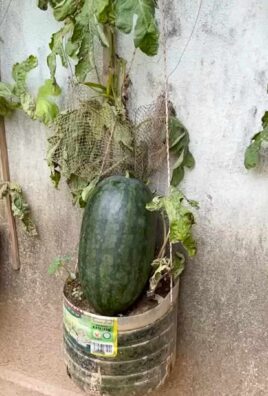Blueberry Home Gardening Guide: Craving juicy, homegrown blueberries but think you need acres of land? Think again! I’m here to tell you that delicious, antioxidant-packed blueberries are totally achievable in your own backyard, patio, or even balcony! This isn’t just about growing fruit; it’s about connecting with nature, enjoying the satisfaction of nurturing something from tiny plant to bountiful harvest, and savoring the unmatched flavor of freshly picked berries.
Blueberries have a rich history, deeply intertwined with Native American culture. They were not only a vital food source but also held medicinal and spiritual significance. Today, we continue to appreciate their incredible health benefits and delightful taste. But let’s face it, store-bought blueberries can be expensive and often lack that vibrant, fresh flavor. That’s where this Blueberry Home Gardening Guide comes in!
I understand that starting a garden can feel overwhelming, especially when you’re dealing with specific plant needs. That’s why I’ve put together this comprehensive guide, packed with easy-to-follow tips and tricks to help you successfully grow blueberries at home, no matter your experience level. From choosing the right variety and preparing the soil to understanding watering and pruning techniques, I’ll walk you through every step of the process. Get ready to enjoy a summer filled with delicious, homegrown blueberries – you deserve it!

Grow Your Own Delicious Blueberries: A Beginner’s Guide to Home Gardening
Okay, blueberry lovers, gather ’round! I’m going to walk you through everything you need to know to grow your own juicy, plump blueberries right in your backyard. Trust me, there’s nothing quite like the taste of homegrown blueberries, and it’s way easier than you might think. Let’s get started!
Choosing the Right Blueberry Variety
First things first, you can’t just plant any old blueberry bush and expect a bounty. You need to choose a variety that’s suited to your climate. Here’s a breakdown:
* Highbush Blueberries: These are the most common type and are generally hardy in USDA zones 4-7. They produce large, delicious berries and are relatively easy to grow. Within highbush, you have Northern Highbush and Southern Highbush. Southern Highbush varieties are more heat-tolerant and suitable for warmer climates.
* Lowbush Blueberries: These are native to colder regions (zones 3-7) and are smaller, more compact plants. They produce smaller berries, but they’re incredibly flavorful.
* Rabbiteye Blueberries: These are the best choice for warmer climates (zones 7-10). They’re very vigorous and produce large crops of berries. They also require cross-pollination, so you’ll need to plant at least two different rabbiteye varieties.
* Half-High Blueberries: As the name suggests, these are a cross between highbush and lowbush varieties. They’re a good choice for colder climates where highbush blueberries might struggle.
How to Figure Out Your USDA Zone: A quick Google search of “USDA plant hardiness zone map” will lead you to a map where you can enter your zip code and find your zone. This is crucial for selecting the right blueberry variety!
My Recommendation: For most beginners, I recommend starting with a highbush variety that’s known for being relatively easy to grow, like ‘Bluecrop’ or ‘Elliott’. If you live in a warmer climate, look into Southern Highbush or Rabbiteye varieties.
Preparing the Soil: Blueberries Love Acid!
This is arguably the most important step. Blueberries are acid-loving plants, meaning they thrive in soil with a pH between 4.5 and 5.5. Most garden soil is too alkaline for blueberries, so you’ll need to amend it.
* Testing Your Soil: Before you do anything, test your soil’s pH. You can buy a soil testing kit at most garden centers or online. Follow the instructions on the kit to get an accurate reading.
* Amending the Soil: If your soil pH is above 5.5, you’ll need to lower it. Here are a few ways to do that:
* Sulfur: This is the most effective way to lower soil pH. Follow the instructions on the sulfur product for application rates. It can take several months for sulfur to fully lower the pH, so it’s best to apply it in the fall before planting in the spring.
* Sphagnum Peat Moss: This is a great amendment for blueberries because it’s acidic and also helps improve drainage. Mix it generously into the planting hole.
* Acidifying Fertilizer: Use a fertilizer specifically formulated for acid-loving plants, such as azaleas or rhododendrons. These fertilizers contain sulfur and other nutrients that blueberries need.
* Coffee Grounds: While not as potent as sulfur, coffee grounds can help lower the pH over time. Spread them around the base of the plants.
* Drainage is Key: Blueberries need well-drained soil. If your soil is heavy clay, amend it with plenty of organic matter, such as compost or peat moss, to improve drainage. Raised beds are also a great option for blueberries, especially in areas with poor drainage.
My Experience: I made the mistake of not properly amending my soil the first time I planted blueberries, and they struggled for years. Don’t skip this step!
Planting Your Blueberry Bushes
Now for the fun part! Here’s how to plant your blueberry bushes:
1. Choose a Sunny Location: Blueberries need at least 6 hours of sunlight per day.
2. Dig a Hole: Dig a hole that’s twice as wide as the root ball and just as deep.
3. Amend the Soil: Mix plenty of sphagnum peat moss and compost into the soil you removed from the hole.
4. Remove the Plant from the Container: Gently remove the blueberry bush from its container. Loosen the roots if they’re tightly bound.
5. Plant the Bush: Place the blueberry bush in the hole, making sure the top of the root ball is level with the surrounding soil.
6. Backfill the Hole: Fill the hole with the amended soil, gently tamping it down.
7. Water Thoroughly: Water the newly planted blueberry bush thoroughly.
8. Mulch: Apply a 2-3 inch layer of mulch around the base of the plant. Pine needles, wood chips, or shredded bark are all good choices. Mulch helps retain moisture, suppress weeds, and regulate soil temperature.
Spacing: Space highbush blueberries about 4-5 feet apart. Rabbiteye blueberries need more space, about 6-8 feet apart.
Caring for Your Blueberry Bushes
Once your blueberry bushes are planted, they’ll need regular care to thrive.
* Watering: Blueberries need consistent moisture, especially during the growing season. Water deeply whenever the top inch of soil feels dry. Avoid overwatering, as this can lead to root rot.
* Fertilizing: Fertilize your blueberry bushes in the spring with an acid-loving fertilizer. Follow the instructions on the fertilizer label for application rates. Avoid fertilizing after mid-summer, as this can encourage late-season growth that’s susceptible to frost damage.
* Pruning: Pruning is essential for maintaining the health and productivity of your blueberry bushes. Prune in late winter or early spring, before new growth begins. Remove any dead, damaged, or crossing branches. Also, remove some of the older canes to encourage new growth.
* Weed Control: Keep the area around your blueberry bushes free of weeds. Weeds compete with blueberries for water and nutrients. Mulch helps suppress weeds, but you may still need to hand-pull them.
* Pest and Disease Control: Blueberries are generally relatively pest- and disease-resistant, but they can be susceptible to certain problems. Keep an eye out for pests like aphids, Japanese beetles, and blueberry maggots. Diseases like powdery mildew and fungal leaf spots can also occur. Treat any problems promptly with appropriate organic or chemical controls.
My Tip: Bird netting is a must! Birds love blueberries just as much as we do, and they can quickly decimate your crop. Cover your blueberry bushes with netting before the berries start to ripen.
Harvesting Your Blueberries
The moment you’ve been waiting for! Blueberries are typically ready to harvest in mid-summer.
* When to Pick: Blueberries are ripe when they’re a deep blue color and easily detach from the stem.
* How to Pick: Gently roll the berries off the stem with your fingers. Avoid pulling or squeezing the berries, as this can damage them.
* Storage: Store freshly picked blueberries in the refrigerator. They’ll last for about a week. You can also freeze blueberries for longer storage.
Enjoy Your Harvest! There’s nothing quite like the taste of homegrown blueberries. Enjoy them fresh, in pies, muffins, smoothies, or however you like!
Troubleshooting Common Blueberry Problems
Even with the best care, you might encounter some problems along the way. Here are a few common issues and how to address them:
* Yellowing Leaves: This is often a sign of nutrient deficiency, particularly iron deficiency. Make sure your soil pH is low enough and fertilize with an acid-loving fertilizer.
* Poor Fruit Set: This can be caused by a number of factors, including poor pollination, frost damage, or nutrient deficiency. Make sure you have at least two different blueberry varieties for cross-pollination, protect your plants from frost, and fertilize properly.
* Small Berries: This can be a sign of overcropping or nutrient deficiency. Prune your plants to remove some of the fruit buds and fertilize with an acid-loving fertilizer.
* No Berries: This could be due to a number of reasons, including improper soil pH, lack of sunlight, or pest or disease problems. Review the steps above and make sure you’re providing the right conditions for your blueberry bushes.
Don’t Give Up! Growing blueberries can be a rewarding experience. Don’t be discouraged if you encounter some problems along the way. With a little patience and persistence, you’ll be enjoying your own homegrown blueberries in no time!

Conclusion
So, there you have it! Embarking on your own blueberry home gardening journey is not just about cultivating delicious fruit; it’s about connecting with nature, fostering a sustainable practice, and reaping the rewards of your own hard work. We’ve covered everything from selecting the right blueberry varieties for your climate and soil to mastering the art of soil acidification and pest control.
Why is this DIY approach a must-try? Because store-bought blueberries, while convenient, often lack the vibrant flavor and nutritional punch of homegrown berries. Plus, you have complete control over the growing process, ensuring that your blueberries are free from harmful pesticides and chemicals. Imagine biting into a plump, juicy blueberry, still warm from the sun, knowing that you nurtured it from a tiny bush to a bountiful harvest. That’s an experience that simply can’t be replicated.
But the beauty of blueberry home gardening lies in its adaptability. Feel free to experiment with different blueberry varieties to discover your personal favorites. Consider adding companion plants like azaleas or rhododendrons, which thrive in similar acidic conditions and can enhance the beauty of your garden. You can also explore different mulching techniques, such as using pine needles or oak leaves, to further acidify the soil and retain moisture. If space is limited, dwarf blueberry varieties are perfect for container gardening on patios or balconies.
Don’t be afraid to get your hands dirty and embrace the learning process. Gardening is a journey, not a destination, and there will be challenges along the way. But with patience, persistence, and a little bit of know-how, you’ll be rewarded with a bountiful harvest of delicious, homegrown blueberries.
We wholeheartedly encourage you to give this DIY blueberry home gardening guide a try. Start small, learn as you go, and most importantly, have fun! And once you’ve tasted the sweet success of your own homegrown blueberries, we’d love to hear about your experience. Share your tips, tricks, and photos in the comments below. Let’s build a community of blueberry enthusiasts and inspire others to embark on their own gardening adventures. Your insights could be invaluable to someone just starting out. Happy gardening!
Frequently Asked Questions (FAQ)
What is the best time of year to plant blueberry bushes?
The ideal time to plant blueberry bushes is in the early spring or late fall, when the plants are dormant. This allows them to establish their root systems before the stresses of summer heat or winter cold set in. If you live in a region with mild winters, fall planting is often preferred, as it gives the bushes a head start in the spring. However, spring planting is also perfectly acceptable, especially in colder climates. Just be sure to plant them as soon as the ground thaws and is workable.
How much sunlight do blueberry bushes need?
Blueberry bushes thrive in full sun, which means they need at least six hours of direct sunlight per day. More sunlight is even better, as it will promote more vigorous growth and a larger, sweeter harvest. If you live in a particularly hot climate, some afternoon shade can be beneficial to prevent the bushes from getting scorched. However, avoid planting them in areas that are heavily shaded, as this will reduce their fruit production.
What type of soil is best for blueberries?
Blueberries require acidic soil with a pH between 4.5 and 5.5. Most garden soils are not naturally acidic enough, so you’ll need to amend the soil before planting. You can do this by adding sulfur, peat moss, or other acidic soil amendments. It’s also important to ensure that the soil is well-draining, as blueberries do not tolerate soggy conditions. Amend heavy clay soils with organic matter to improve drainage. A soil test is highly recommended to determine the pH and nutrient levels of your soil before planting.
How often should I water my blueberry bushes?
Blueberry bushes need consistent moisture, especially during the growing season. Water them deeply and regularly, especially during dry spells. Aim to keep the soil consistently moist but not waterlogged. Mulching around the base of the bushes will help to retain moisture and suppress weeds. The frequency of watering will depend on your climate and soil type, but generally, you should water them at least once or twice a week.
What kind of fertilizer should I use for blueberries?
Use a fertilizer specifically formulated for acid-loving plants, such as azaleas or rhododendrons. These fertilizers typically contain ammonium sulfate or other ingredients that help to lower the soil pH. Avoid using fertilizers that contain nitrates, as these can be harmful to blueberries. Fertilize in the early spring, just before the bushes begin to grow. Follow the instructions on the fertilizer package carefully, as over-fertilizing can damage the plants.
How do I prune blueberry bushes?
Pruning is essential for maintaining the health and productivity of blueberry bushes. Prune them in late winter or early spring, before new growth begins. Remove any dead, damaged, or crossing branches. Also, prune out some of the older, less productive canes to encourage new growth. The goal is to create an open, airy structure that allows sunlight to penetrate the center of the bush. For young bushes, focus on shaping the plant and removing any suckers that grow from the base.
How do I protect my blueberries from pests and diseases?
Blueberries can be susceptible to various pests and diseases, such as birds, insects, and fungal infections. To protect your berries from birds, you can cover the bushes with netting. Insect pests can be controlled with insecticidal soap or other organic insecticides. Fungal diseases can be prevented by ensuring good air circulation and avoiding overhead watering. If you notice any signs of disease, treat the bushes with a fungicide specifically labeled for blueberries. Regular monitoring and early intervention are key to preventing serious problems.
Can I grow blueberries in containers?
Yes, you can successfully grow blueberries in containers, especially dwarf varieties. Choose a large container with good drainage holes. Use a potting mix specifically formulated for acid-loving plants. Water regularly and fertilize as needed. Container-grown blueberries may need to be watered more frequently than those grown in the ground, as the soil in containers tends to dry out more quickly. Also, be sure to protect the containers from freezing temperatures during the winter.
How long does it take for blueberry bushes to produce fruit?
Blueberry bushes typically start producing fruit within one to three years of planting. However, it may take several years for them to reach their full production potential. The amount of fruit they produce will depend on the variety, the growing conditions, and the age of the plant. Be patient and continue to provide proper care, and you’ll be rewarded with a bountiful harvest in the years to come.
What are some good companion plants for blueberries?
Good companion plants for blueberries include azaleas, rhododendrons, camellias, and other acid-loving plants. These plants thrive in similar soil conditions and can help to create a more balanced and healthy ecosystem in your garden. Other beneficial companion plants include herbs like thyme and rosemary, which can help to repel pests. Avoid planting blueberries near plants that prefer alkaline soil, such as lavender or lilacs.




Leave a Comment